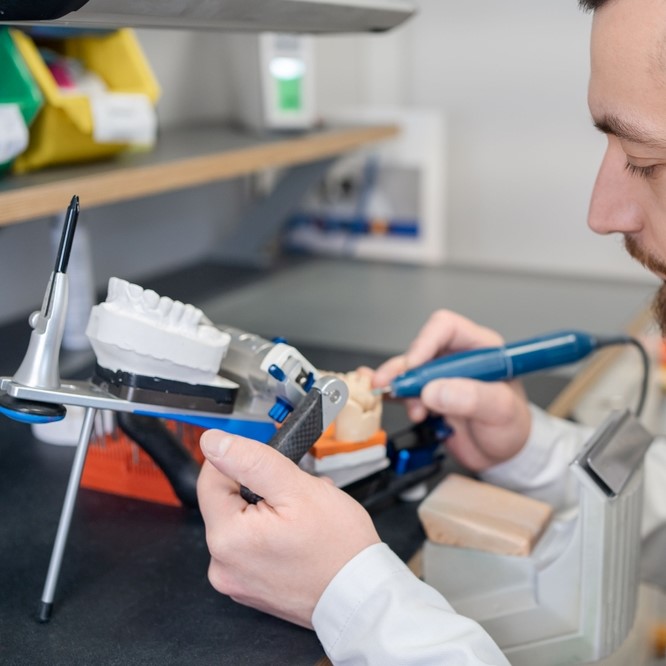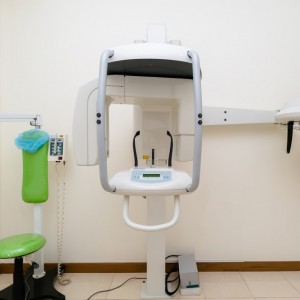
CBCT in orthodontics: assessment of treatment outcomes and indications for its use
Since its introduction into dentistry in 1998, CBCT has become increasingly utilized for orthodontic diagnosis, treatment planning and research.
The utilization of CBCT for these purposes has been facilitated by the relative advantages of three-dimensional (3D) over two-dimensional radiography. Despite many suggested indications of CBCT, scientific evidence that its utilization improves diagnosis and treatment plans or outcomes has only recently begun to emerge for some of these applications.
This article provides a comprehensive and current review of key studies on the applications of CBCT in orthodontic therapy and for research to decipher treatment outcomes and 3D craniofacial anatomy. The current diagnostic and treatment planning indications for CBCT include impacted teeth, cleft lip and palate and skeletal discrepancies requiring surgical intervention. The use of CBCT in these and other situations such as root resorption, supernumerary teeth, temporomandibular joint (TMJ) pathology, asymmetries and alveolar boundary conditions should be justified on the basis of the merits relative to risks of imaging.
CBCT has also been used to assess 3D craniofacial anatomy in health and disease and of treatment outcomes including that of root morphology and angulation; alveolar boundary conditions; maxillary transverse dimensions and maxillary expansion; airway morphology, vertical malocclusion and obstructive sleep apnoea; TMJ morphology and pathology contributing to malocclusion; and temporary anchorage devices. Finally, this article utilizes findings of these studies and current voids in knowledge to provide ideas for future research that could be beneficial for further optimizing the use of CBCT in research and the clinical practice of orthodontics.
Authors: S D Kapila, J M Nervina
Source: https://academic.oup.com/
 Tag
Tag
 Related articles
Related articles
Products 24 September 2025
With top-of-the-line 3D imaging technology and all the essential dental imaging programs, Planmeca’s latest offering easily meets the everyday needs of general dentistry, endodontics, and...
Periodontology 10 September 2025
To update the findings of a systematic review from the year 2016 on the evidence for the accuracy and potential benefits of cone beam computed tomography (CBCT) in periodontal diagnostics.
Digital Dentistry 02 June 2025
A novel workflow for computer guided implant surgery matching digital dental casts and CBCT scan
Nowadays computer-guided “flap-less” surgery for implant placement using stereolithographic tem-plates is gaining popularity among clinicians and patients.
Digital Dentistry 16 May 2025
Digital Dentistry & Material Science: Sculpting the Future of Oral Care- A Narrative Review
This review examines the dynamic intersection of digital dentistry and material science, exploring current trends and advancements shaping modern dental practice.
 Read more
Read more
Much like EMTs rushing to the scene after an accident, stem cells hurry to the site of a skull fracture to start mending the damage. A new finding has uncovered the signaling mechanism that triggers...
Products 05 November 2025
SimplyTest has launched a groundbreaking saliva-based test to detect high-risk strains of oral human papillomavirus (HPV), a major cause of oropharyngeal cancers.
News 05 November 2025
Perimetrics, Inc., a dental technology company pioneering quantitative diagnostics, announced today that the U.S. Food and Drug Administration (FDA) has granted clearance for the InnerView...
News 05 November 2025
On October 15, open enrollment for Medicare began nationwide. Hundreds of thousands of seniors in New Jersey will once again face the challenge of finding the right Medicare coverage, including the...
Digital Dentistry 04 November 2025
Digitalisation is an expanding field in dentistry and implementation of digital teaching methods in dental education is an essential part of modern education.















